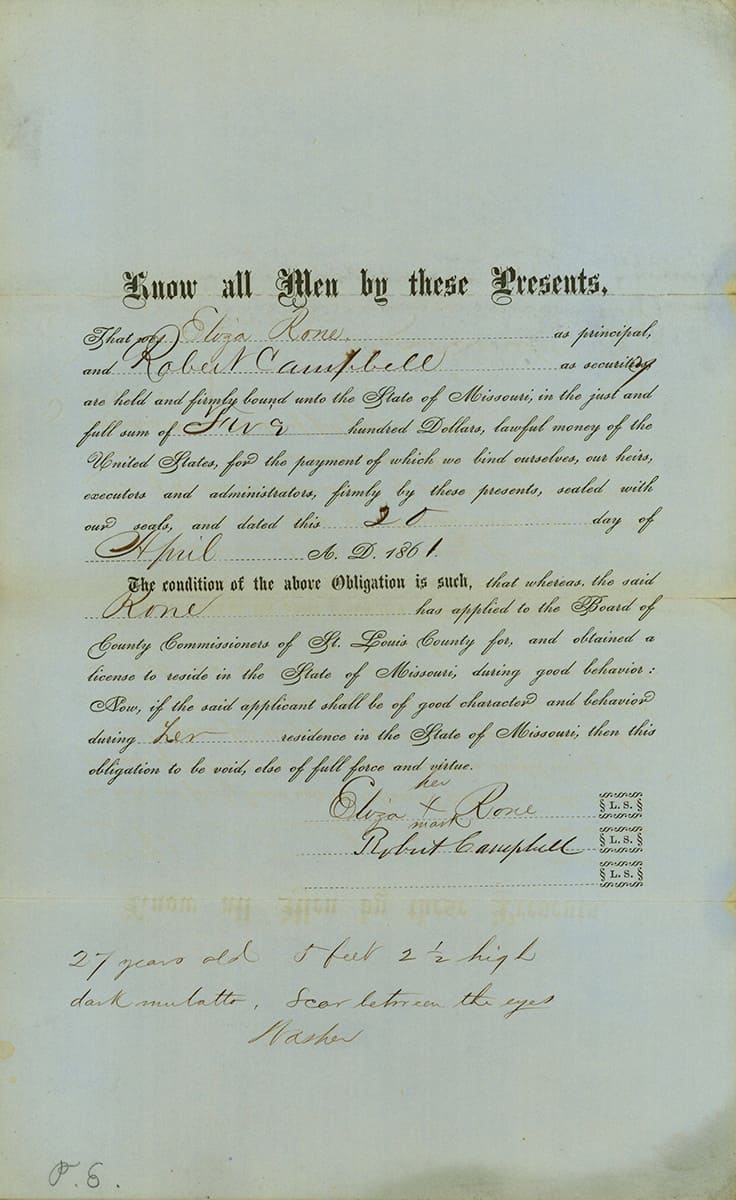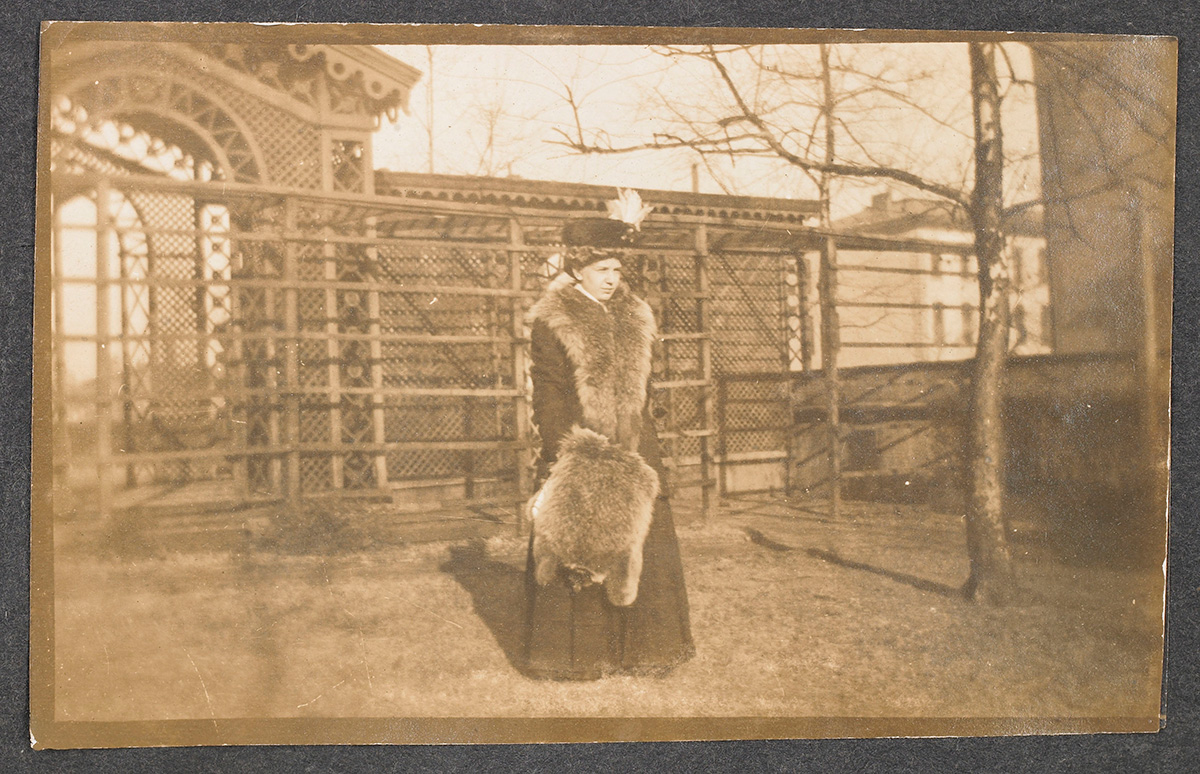Maintaining The Campbell House
The Campbells maintained their elegant lifestyle with the aid of servants and enslaved persons. Both groups worked side-by-side in cleaning, cooking, caring for children, serving dinners, doing laundry, gardening, chauffeuring, and any other task requested.
Prior to Robert’s marriage to Virginia, he does not seem to have owned any slaves. Virginia had inherited three enslaved children from her late father, and all three came to St. Louis in 1841. None of those three lived at the Campbell House, as they appear to have been sold or freed before 1854. One woman and sometimes one child is listed as enslaved in censuses taken between 1854 and 1857, but this is typically the extent of information available about them.
More is known about the one enslaved person to live at the Campbell house. Eliza Rone was born around 1830. How and when she came to the Campbells is unknown, although she may be the Eliza referenced in several letters as being close to Hazlett Campbell (1853–1856). Eliza had two children, the eldest of whom was named Aleck. In 1857, Robert emancipated Eliza and her children, apparently spurred to do so because Virginia had grown disillusioned with the institution. Eliza and her husband John remained in St. Louis until 1870, when they moved to Kansas City. The Rones and the Campbells remained in touch until Eliza’s death in 1923.
Campbell servants were paid. Typically of the time, most were women and many were Irish by birth or heritage. The Campbells also employed at least two German women. Little is known about most of them outside of their names and origin. A handful of servants, likely the head cook or housemaid, lived in quarters on the second floor; the remainder lived in a detached servant’s hall (this structure no longer exists). While the Campbells employed men as groundskeepers or coachmen, there is no evidence they ever had a butler.
More is known about the servants after Robert and Virginia’s deaths. Hugh gave his servants lavish gifts, hosted dinners for them, and referred to them as “his people”. Since Hugh did not host extravagant dinners, his staff was smaller, often consisting of no more than a personal assistant or secretary, a cook, and a housekeeper and other duties were either catered or hired as needed. Two servants remained with the Campbells for several decades: Mary Boerste was housekeeper from the early 1900s until her death in 1936, while Gus Meyer acted as driver and doorman from 1901 until Hazlett died in 1938. Both were given $30,000 in Hugh’s will.
When the Campbell House Museum opened in 1943, Gus Meyer was in attendance to usher in a new era.
List of Documented Servants at the Campbell House
- Eliza Owens, Nurse c. 1855
- Eliza Rhone (Rone), Enslaved servant, c. 1855
- Ellen McCabe, servant c. 1860
- Mary A. O’Keefe, servant c. 1860
- Mary Carcy, servant c. 1860, Ireland
- Margaret Pfiefer, servant c. 1860
- Barbara Leitan, servant c. 1860
- Frank Byrne, Coachman c. 1860
- John O’Neal, Coachman c. 1880
- Alfred Johnson, servant c. 1880
- Nellie Mean, servant c. 1880
- Ellen Ranney, servant c. 1880
- Catherine Harvey, Housekeeper c. 1880–1900
- Hannah O’Rourke, Faithful attendant c. 1880 ‑1900
- Mary Kelly, servant c. 1882
- James Courtenay, servant c. 1882
- Katie Elliot, Housekeeper c. 1890
- Matilda “Mattie”Wood, Cook c. 1900
- Minnie Huganberg, Housemaid c. 1900
- August H. Meyer, Personal Secretary, 1901–1938
- Emilie “Millie” Barklage, Upstairs Maid c. 1902
- Anna Maria Temme, servant c. 1902–1905
- Adele, servant c. 1903
- Carrie, servant c. 1903
- Lettie, servant c. 1903
- Ellen Annie Beasley, servant c. 1903
- Mary Boerste, Housekeeper, 1904–1938
- Susan Hacke, Housemaid c. 1910
- Anabel Wendt Panagos, servant c.1915
- Martha Siebke, Cook c.1916–1924
- Mamie Siebke, servant c.1924
- Philomena “Minnie” Kleeman, Cook c.1934–1936
- Frank Havinatti, Maintenance c. 1923–1938
- Ethel Salzman, Cook c.1930
While most of their servants were white, Alfred Johnson, Matilda Wood, Ellen Beasley were listed in the U.S. census as “Black”, and Eliza Rhone (or Rone) was enslaved until 1857, when Robert emancipated her.




